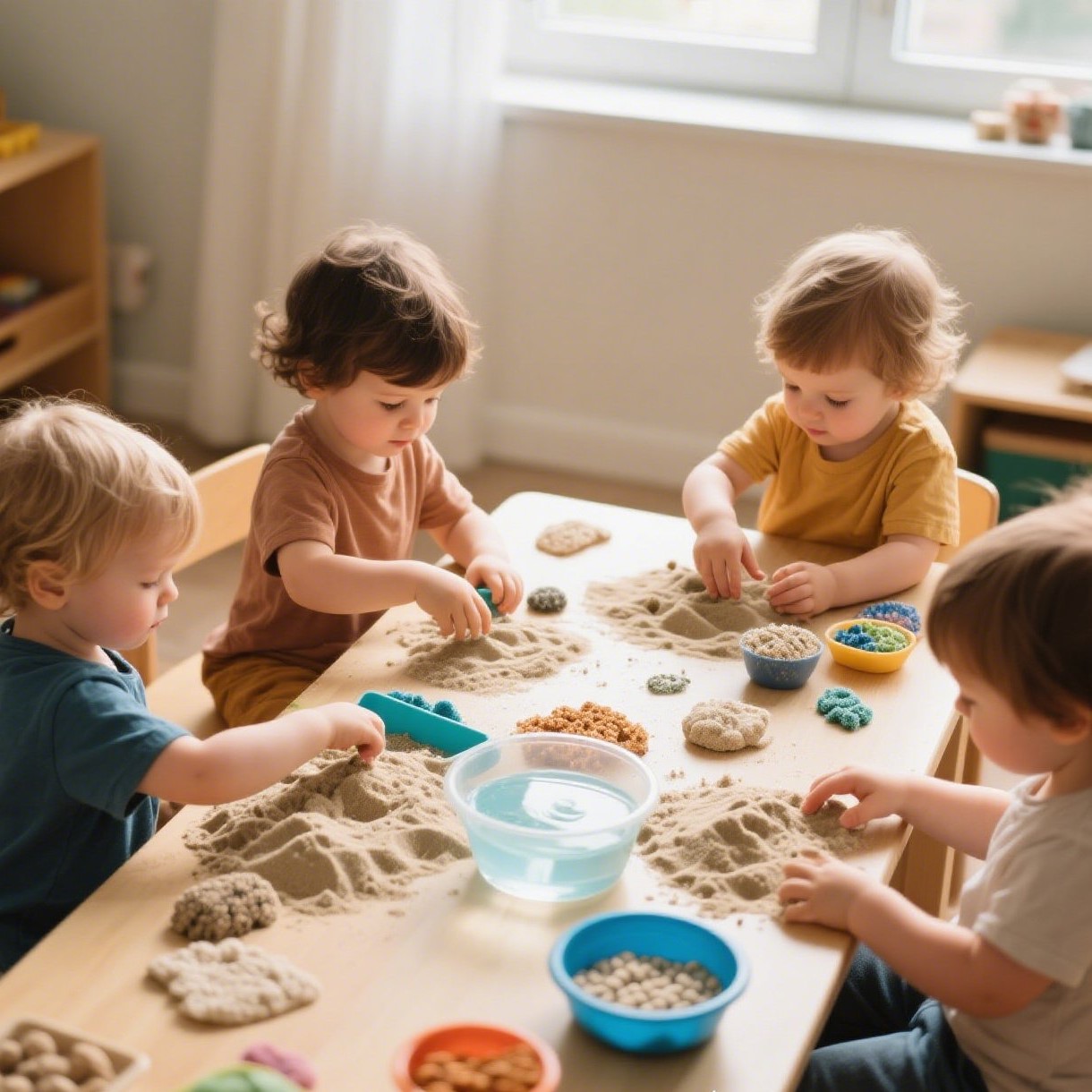Sensory play is more than just fun—it’s essential to your child’s early development. For preschoolers, engaging in sensory activities helps build neural pathways in the brain, supports early childhood development, and boosts emotional, social, and motor skills. The good news? You don’t need fancy tools or a classroom to create enriching experiences. With a few basic materials and a little creativity, you can bring the power of sensory learning right into your home.
This article explores five simple and engaging sensory activities to try with your preschooler at home. Each activity encourages exploration, creativity, and learning in a way that’s playful, calming, and meaningful.
1. DIY Sensory Bins
Why it works: Sensory bins are the gold standard of tactile play. They’re incredibly versatile and can be tailored to your child’s interests or the season.
Materials needed:
- A large plastic container or bin
- Fillers like dry rice, beans, lentils, pasta, or shredded paper
- Scoops, cups, tongs, spoons
- Small themed toys (e.g., dinosaurs, mini animals, alphabet letters)
How to set it up: Fill the bin with your chosen filler, then add tools and small toys to encourage exploration. If your child loves farm animals, toss in some toy cows and pigs. Want to create a holiday theme? Add small ornaments and green/red pom-poms.
Developmental benefits:
- Enhances fine motor skills through scooping, pouring, and pinching
- Encourages independent play and focus
- Supports imaginative storytelling and language development
Pro tip: Add a few drops of essential oil like lavender or peppermint to elevate the sensory experience.
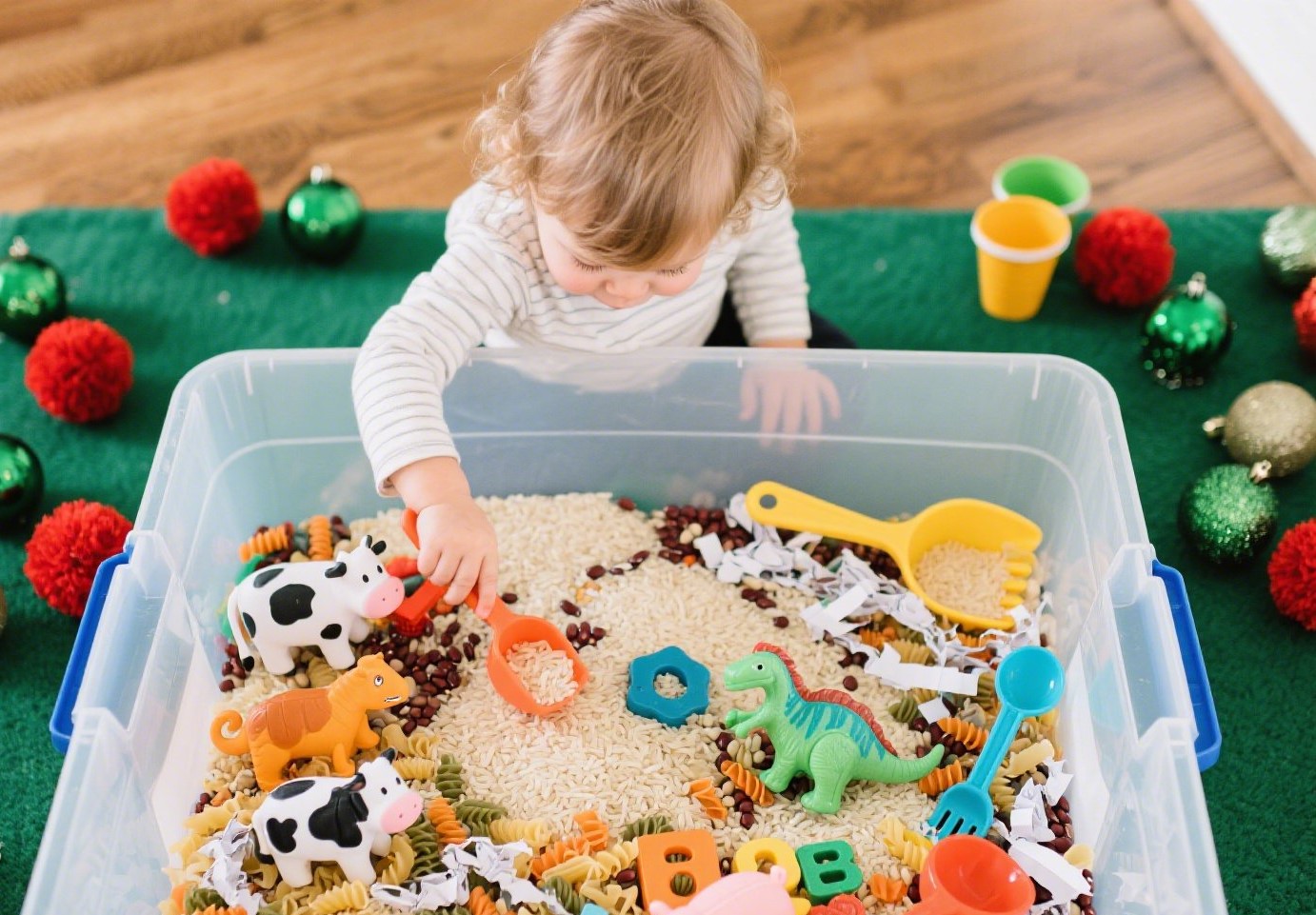
2. Water Play Station
Why it works: Water play is naturally soothing and endlessly engaging for preschoolers. It helps them explore cause-and-effect while supporting coordination and emotional regulation.
Materials needed:
- A large bowl, bucket, or shallow bin
- Plastic cups, ladles, spoons, funnels
- Floating toys, sponges, measuring cups
- Optional: a drop of food coloring or bubbles
Indoor setup: Place the bin on a towel in the kitchen or bathroom. Use an apron or old shirt to keep your child dry.
Outdoor setup: Take it outside on a warm day and let your preschooler explore freely.
Developmental benefits:
- Supports hand-eye coordination and gross motor skills
- Encourages experimentation and problem-solving
- Provides calming sensory input for overstimulated children
Pro tip: Turn it into a science experiment by freezing small toys in ice cubes and letting your child “rescue” them using warm water and droppers.
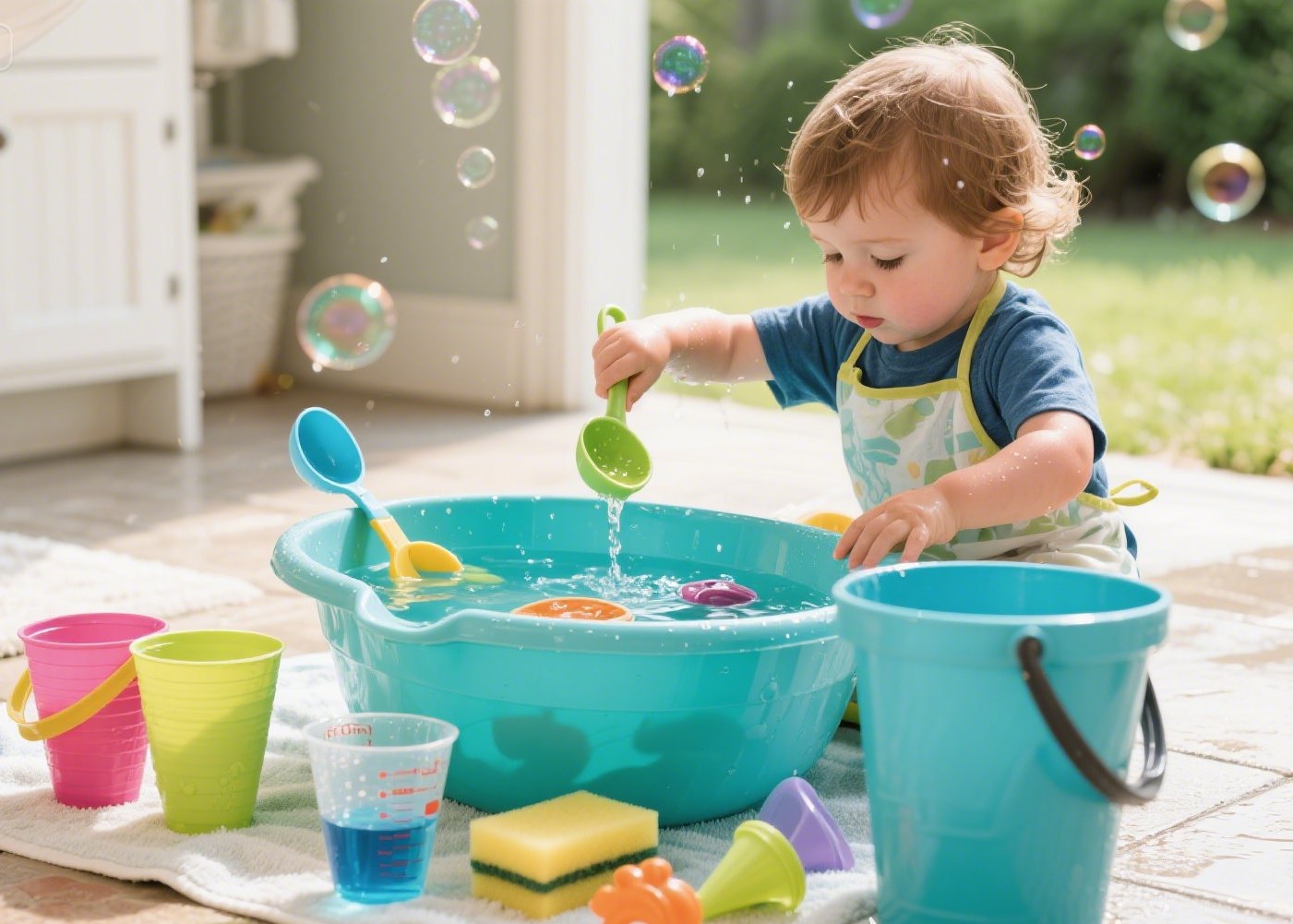
3. Homemade Playdough Fun
Why it works: Making and playing with playdough is one of the most accessible and effective sensory activities for preschoolers. It engages multiple senses—touch, sight, and smell—and can be used for open-ended play.
Simple playdough recipe:
- 2 cups flour
- 1 cup salt
- 1 tablespoon cream of tartar
- 1 tablespoon vegetable oil
- 1 to 1.5 cups warm water
- Food coloring (optional)
Mix ingredients and knead until smooth. Store in an airtight container.
Ideas for enhancement:
- Add a few drops of lavender oil for calming play
- Mix in glitter, sand, or small beads for extra texture
- Offer cookie cutters, rolling pins, and plastic knives
Developmental benefits:
- Strengthens fine motor muscles
- Encourages creativity and self-expression
- Promotes emotional regulation through repetitive motion
Pro tip: Ask your child to shape playdough into different facial expressions (happy, sad, surprised) to spark conversations about feelings.
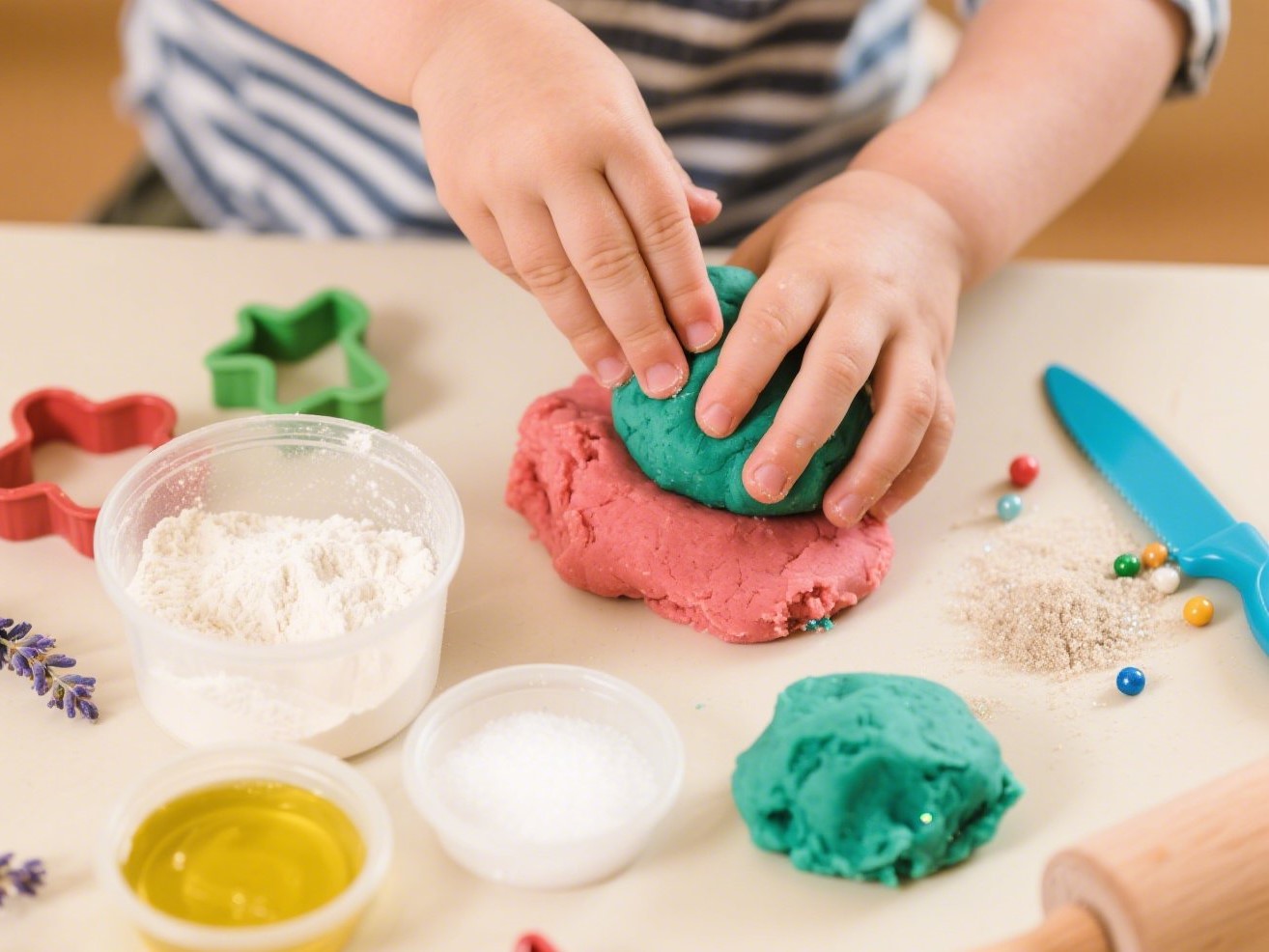
4. Nature Walk Sensory Scavenger Hunt
Why it works: Nature offers a rich, free sensory environment where kids can explore colors, textures, and sounds while grounding their bodies and emotions.
Materials needed:
- Paper and crayons for bark rubbings
- Small basket or bag for collected items
- A checklist (or mental list) of things to find:
- Something smooth, rough, round, green, crunchy, etc.
- Sounds like birds, rustling leaves, or footsteps
How to make it mindful: Encourage your child to walk slowly, notice what they hear, feel the textures of leaves, or smell flowers. You’re not just going for a walk—you’re encouraging mindful sensory exploration.
Developmental benefits:
- Builds sensory vocabulary and observational skills
- Fosters curiosity and mindfulness
- Strengthens the connection between movement and sensory input
Pro tip: Turn it into a journal activity. After the walk, let your child draw what they found or describe how it felt.
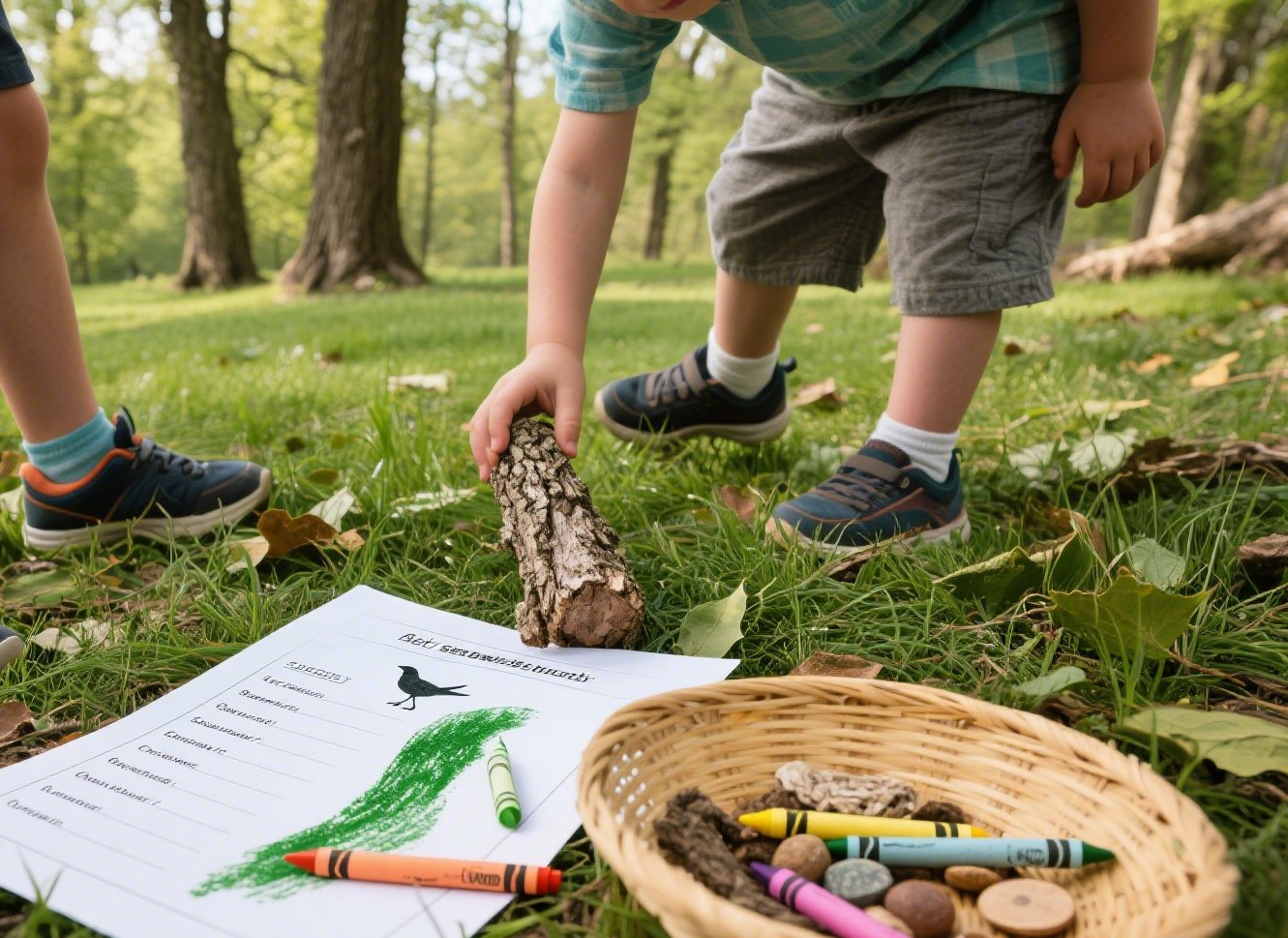
5. Scented Painting with Spices
Why it works: Combining art with olfactory play boosts creativity and emotional expression. It’s a unique way to stimulate both smell and sight while giving your preschooler a rich, multisensory experience.
Materials needed:
- Paper or cardboard
- Paint (or homemade paint using water and flour)
- Common kitchen spices: cinnamon, turmeric, paprika, cocoa powder
- Brushes, sponges, or cotton swabs
How to set it up: Mix spices into your paint or sprinkle them directly onto wet paint. Let your child explore how each spice smells and looks. Use this as an opportunity to talk about colors, scents, and even cultural dishes the spices are used in.
Developmental benefits:
- Enhances fine motor skills through painting
- Encourages emotional expression through color and scent
- Supports sensory integration by stimulating multiple senses at once
Pro tip: Label each painting with the spice used and ask your child how it made them feel.
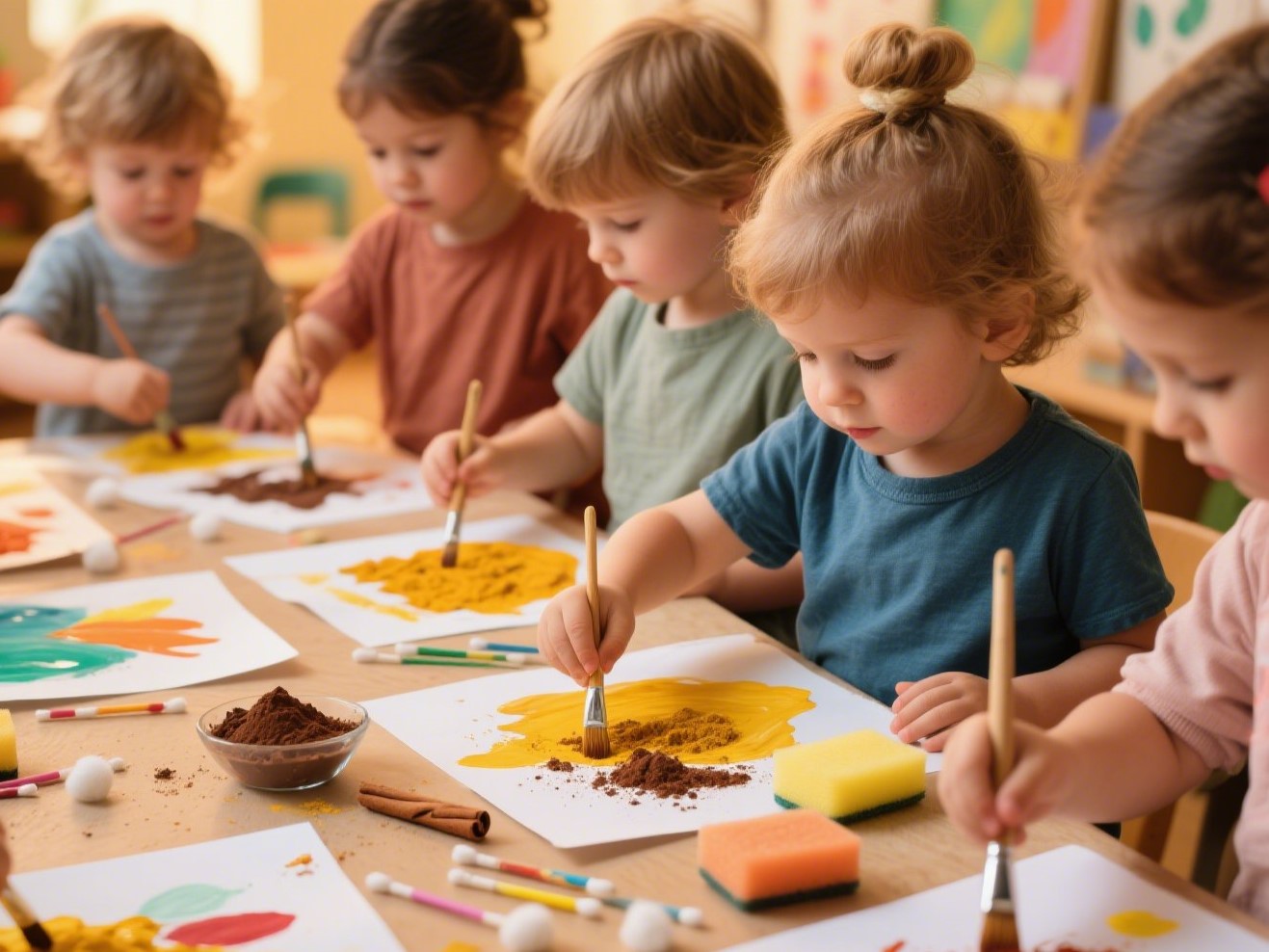
Tips for Parents
Integrating sensory activities at home can be simple, cost-effective, and rewarding. Here are a few tips to make the most of the experience:
- Keep it simple: Everyday materials like rice, water, or leaves can be transformed into powerful learning tools.
- Embrace messiness: Sensory play is often messy—but it’s in the mess that learning and joy happen.
- Let your child lead: Pay attention to what your preschooler gravitates toward. Some kids love wet textures, others prefer dry or crunchy ones.
- Balance stimulation: Alternate between high-energy sensory play (like jumping or spinning) and calming ones (like playdough or water play).
- Encourage reflection: Use questions like “How did that feel?” or “What do you smell?” to build emotional and sensory awareness.
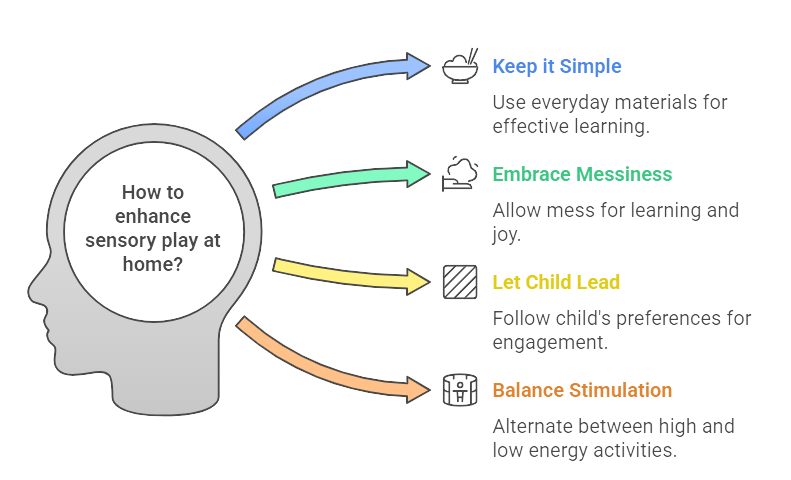
Conclusion
Sensory play is one of the most powerful tools in your parenting toolbox. These five simple sensory activities offer rich opportunities for growth, learning, and connection—all from the comfort of your home. Whether you’re scooping beans in a sensory bin or painting with cinnamon, you’re helping your preschooler build vital skills that support lifelong emotional development, creativity, and confidence.
So roll up your sleeves, gather some household items, and dive into the wonderful world of at-home sensory play. Your preschooler—and their developing brain—will thank you.

